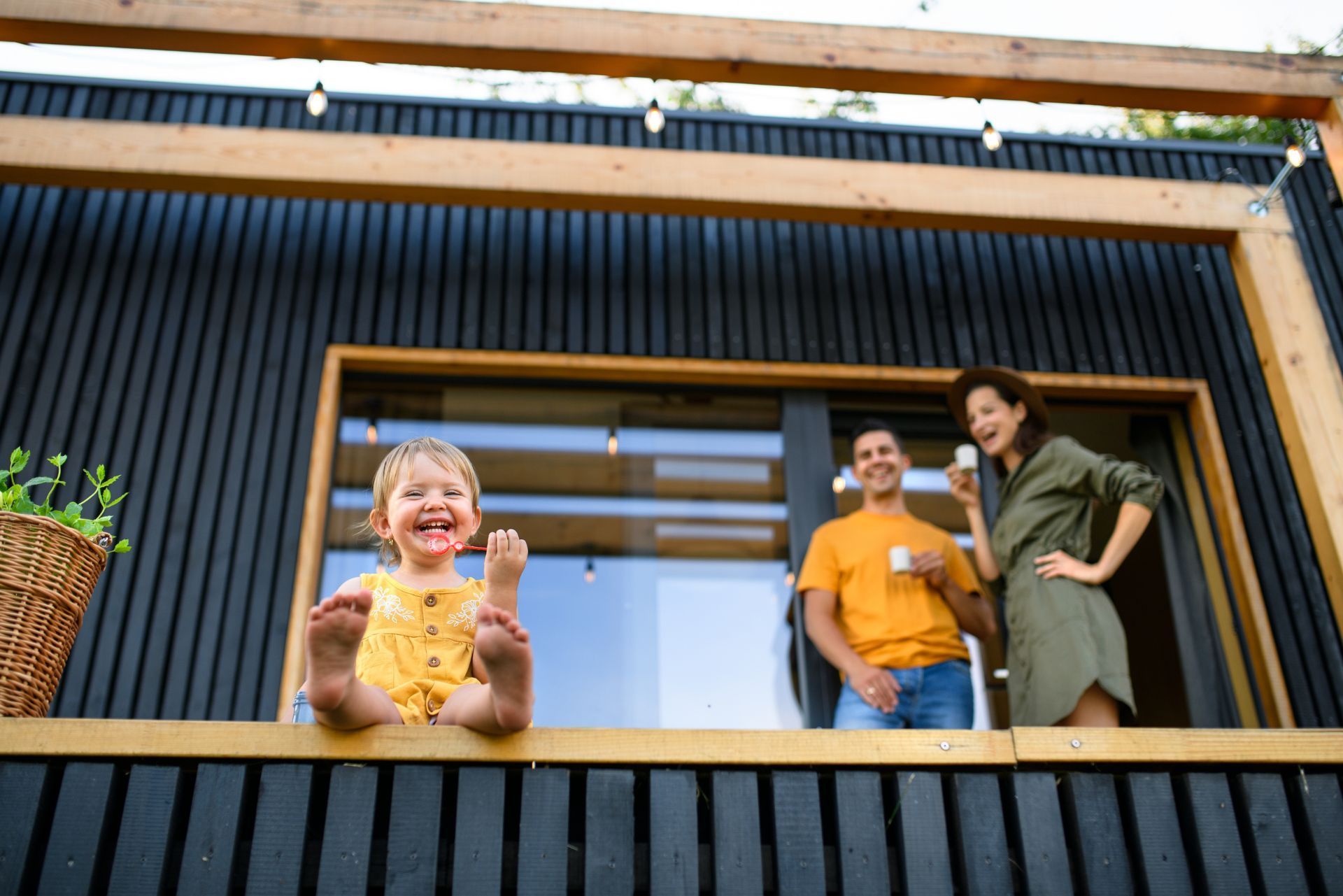Accessory Dwelling Unit Insurance in California

9:00am - 6:00pm Mon-Fri
Will Reply in 15min*
Top 3 Recommended Policies
Index
Understanding Accessory Dwelling Units
The Benefits of Accessory Dwelling Units
Legal and Zoning Considerations for Accessory Dwelling Units
Designing and Building an Accessory Dwelling Unit
Accessory Dwelling Units (ADUs) have become increasingly popular in recent years as homeowners look for ways to
maximize their property's potential. Whether you're planning to build an ADU on your existing property or you're simply curious about the concept, it's important to understand the ins and outs of these secondary living spaces.

Understanding Accessory Dwelling Units
An Accessory Dwelling Unit, sometimes referred to as a granny flat, in-law suite, or backyard cottage, is a self-contained living space that is secondary to the main residence on a property. It is a separate structure that typically includes a bedroom, bathroom, kitchen, and living area. ADUs can either be attached to the main dwelling or stand alone as a detached unit.
Definition of Accessory Dwelling Units
An ADU is a legal living space that meets the requirements set by local zoning laws and regulations. These regulations dictate the size, location, and other specifications of the ADU, ensuring that it complies with the community's guidelines. ADUs are designed to provide additional housing options and increase the density in an area without drastically changing the existing neighborhood character.
When it comes to the size of an ADU, it can vary depending on the specific regulations of each locality. Some areas may have restrictions on the maximum square footage allowed for an ADU, while others may have more flexibility. The location of the ADU on the property is also an important consideration. In some cases, ADUs may be required to be located at the rear of the property or within a certain distance from the main residence.
One of the key benefits of ADUs is their versatility. They can serve as a living space for aging parents or adult children, providing them with privacy and independence while still being close to the main residence. ADUs can also be used as rental properties, allowing homeowners to generate additional income. Additionally, ADUs can be a solution for homeowners who need extra space for a home office, studio, or guest quarters.
Different Types of Accessory Dwelling Units
There are various types of ADUs available, each with its own unique features and benefits. Attached ADUs are built as an extension of the main dwelling and share a common wall. This type of ADU can be convenient for homeowners who want easy access between the main residence and the ADU. It can also be a cost-effective option since it utilizes existing infrastructure.
Detached ADUs, on the other hand, are separate structures from the main residence and can be located in the backyard. This type of ADU offers more privacy and a sense of independence. It can also provide homeowners with the opportunity to create a separate outdoor space for the ADU, such as a patio or garden.
Garage conversions involve transforming an existing garage into a living space. This type of ADU can be a great option for homeowners who have unused or underutilized garage space. It allows them to repurpose the area and create a functional living space without the need for additional construction.
Basement conversions utilize the basement area for an ADU. This type of ADU can be advantageous for homeowners who have a basement that is currently being used for storage or is unfinished. By converting the basement into a living space, homeowners can maximize the use of their property and create an additional dwelling unit.
When deciding on the type of ADU to build, homeowners should consider factors such as their budget, available space, and personal preferences. Each type of ADU has its own advantages and considerations, and it is important to choose the one that best suits the homeowner's needs and goals.
The Benefits of Accessory Dwelling Units
ADUs offer numerous advantages to both homeowners and the wider community. Understanding these benefits can help you make an informed decision about incorporating an ADU on your property.
When considering the benefits of accessory dwelling units (ADUs), it is important to delve into the various aspects that make them a valuable addition to any property. From financial advantages to environmental impact and community benefits, ADUs have the potential to transform the way we live and interact with our surroundings.
Financial Advantages
One of the primary benefits of having an ADU is the potential for additional income. Homeowners can rent out the ADU to generate a steady stream of rental income, which can help offset their mortgage or cover other expenses. This additional income can provide homeowners with financial stability and flexibility, allowing them to pursue other investments or save for the future.
Moreover, the increase in property value that ADUs can bring can be beneficial when it comes time to sell the property. With the growing demand for multi-generational living and flexible housing options, properties with ADUs are often highly sought after in the real estate market. This increased demand can lead to higher property values and a greater return on investment for homeowners.
Environmental Impact
ADUs can also have a positive environmental impact. By utilizing existing infrastructure and maximizing the use of available space, ADUs help reduce urban sprawl and the need for new developments. This means less land is being consumed for housing purposes, preserving natural habitats and green spaces.
Moreover, ADUs often incorporate sustainable design features such as energy-efficient appliances and renewable energy sources. These eco-friendly elements not only reduce utility costs for homeowners but also contribute to a greener and more sustainable future. By embracing sustainable practices, ADUs play a crucial role in mitigating climate change and promoting environmental stewardship.
Community and Social Benefits
ADUs can contribute to the overall sense of community and social connectivity. By allowing extended family members to live nearby or providing affordable housing options for individuals and couples, ADUs foster stronger relationships and support networks within the community. This close proximity encourages regular interaction and creates a sense of belonging, which is essential for overall well-being.
Additionally, ADUs can help address housing shortages and provide affordable housing options, especially in high-demand areas. In many cities, the lack of affordable housing has become a pressing issue, making it difficult for individuals and families to find suitable homes. ADUs offer a viable solution by providing affordable and flexible housing options that meet the diverse needs of the community.
Furthermore, ADUs promote inclusivity and diversity within neighborhoods. By accommodating a range of individuals and families, ADUs create vibrant and dynamic communities that celebrate different backgrounds and lifestyles. This diversity enriches the social fabric of the neighborhood and fosters a sense of acceptance and understanding among residents.
In conclusion, the benefits of accessory dwelling units extend far beyond their initial purpose. From financial advantages to environmental impact and community benefits, ADUs have the potential to transform our living spaces and enhance our quality of life. By embracing these benefits, homeowners can create a more sustainable and inclusive future for themselves and their communities.

Legal and Zoning Considerations for Accessory Dwelling Units
Before embarking on building an ADU, it is crucial to familiarize yourself with the legal and zoning considerations that may affect your project.
Building an Accessory Dwelling Unit (ADU) can be an exciting and rewarding endeavor. Not only can it provide additional living space for your family or generate rental income, but it can also add value to your property. However, before you start the construction process, there are several important legal and zoning considerations that you need to be aware of.
Zoning Laws and Regulations
Each municipality has its own zoning laws and regulations regarding ADUs. It is essential to check the specific requirements for your area to ensure compliance. These regulations typically specify the size, setback requirements, parking provisions, and occupancy limits for ADUs. Some areas might have additional rules, such as design guidelines, to preserve the neighborhood aesthetic.
Understanding the zoning laws and regulations is crucial to avoid any potential legal issues or delays in the construction process. By familiarizing yourself with these requirements, you can ensure that your ADU meets all the necessary criteria and obtain the required permits.
Furthermore, it is important to consider the impact of zoning laws on the functionality and design of your ADU. For example, setback requirements may dictate how close the ADU can be to the main dwelling or property lines, which could affect the layout and placement of the unit.
Building Codes and Standards
In addition to zoning laws, building codes and standards must be adhered to when constructing an ADU. These codes cover various aspects, such as safety, accessibility, structural integrity, and energy efficiency. It is crucial to work with licensed professionals who are well-versed in the applicable building codes to ensure the ADU meets all required standards.
Building codes are in place to protect the health, safety, and welfare of occupants. They provide guidelines for construction practices, materials, and systems to ensure that buildings are structurally sound and meet certain performance standards. Compliance with building codes is not only a legal requirement but also essential for the long-term durability and safety of your ADU.
When designing your ADU, it is important to consider the specific requirements outlined in the building codes. For example, accessibility standards may dictate the width of doorways and hallways, the placement of grab bars in bathrooms, and the inclusion of ramps or elevators for people with disabilities. By incorporating these requirements into your design, you can ensure that your ADU is accessible to all individuals.
Additionally, building codes often include energy efficiency standards, such as insulation requirements and energy-efficient lighting fixtures. By incorporating these features into your ADU, you can reduce energy consumption and lower utility costs for both yourself and future occupants.
Overall,
understanding and complying with zoning laws and building codes is essential when building an ADU. By doing so, you can ensure that your project is legally sound, meets all necessary standards, and provides a safe and comfortable living space for its occupants.
Designing and Building an Accessory Dwelling Unit
Designing and building an ADU requires careful planning and consideration. These steps can help you create a functional and attractive living space that suits your needs.
Planning Your Accessory Dwelling Unit
Prior to starting the construction process, it is essential to establish a clear plan for your ADU. Consider the intended use of the space, the desired layout, and any specific design elements you wish to incorporate. Working with an architect or designer can help you translate your vision into a comprehensive design that meets your needs and complies with local regulations.
Construction Process and Costs
Once the design phase is complete, the construction process can commence. Hiring a reputable contractor with experience in building ADUs is crucial to ensure a smooth and efficient construction process. Make sure to obtain the necessary permits and schedule inspections as required by local authorities. Keep in mind that costs will vary depending on several factors, including the size, complexity of design, and the selection of materials and finishes.
Renting Out Your Accessory Dwelling Unit
If you decide to rent out your ADU, there are important considerations to keep in mind to make the renting experience successful for both you and your tenants.
Finding the Right Tenants
When searching for tenants, it's important to conduct a thorough screening process to ensure they are reliable, responsible, and a good fit for your ADU. This can involve background checks, employment verification, and checking references. Establish clear expectations and guidelines for tenants, including rent payment schedules, maintenance responsibilities, and rules regarding the use of shared spaces.
Understanding Landlord Responsibilities
As a landlord, it is essential to understand your responsibilities and obligations. Familiarize yourself with local laws and regulations governing landlord-tenant relationships, including rent control policies, security deposit requirements, and eviction procedures. Stay in regular communication with your tenants and address maintenance or repair requests promptly to maintain a positive landlord-tenant relationship.
By gaining a comprehensive understanding of ADUs and the considerations associated with them, you can make informed decisions regarding their integration into your property. From understanding the different types of ADUs to navigating legal and zoning considerations, this knowledge equips you to embark on your ADU project confidently.



